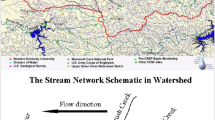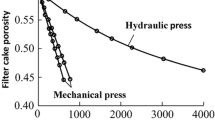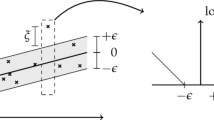Abstract
Two machine learning methods, support vector machine and K-Nearest Neighbours (KNN) were investigated in this paper to predict the coagulant dosage in water treatment plants (WTPs). Two types of support vector machine regression techniques, ε-SVR and v-SVR, using two different kernel functions (radial basis function (RBF) and polynomial function), and KNN were investigated in order to predict coagulant dosage in a large, a medium, and two small-sized WTPs. The results show that these two types of support vector machine regression techniques have good predictive capabilities for the large and medium WTPs as compared to small water systems. The performances of ε-SVR with RBF kernel function were compared with that obtained from the KNN algorithm (as baseline) for four WTPs. The comparison shows that the KNN has similar performances as ε-SVR for the large and medium- sized WTPs and performs better for two small-sized WTPs. The results show that different machine learning methods have competing predictive abilities.







Similar content being viewed by others
Notes
Actual “system output” is differentiated from “model output” as it is obtained from past inputs and outputs.
References
Bae H, Kim S, Kim Y, Kim C-W (2005) Self-generation of control rules using hierarchical and nonhierarchical clustering for coagulant control of water treatment plants. In: Hoffmann A, Motoda HZ, Scheffer T (eds) Discovery science. Springer, Berlin, pp 371–373
Basak D, Pal S, Patranabis DC (2007) Support vector regression. Neural Inf Process Lett Rev 11(10):203–224
Baxter CW, Stanley SJ, Zhang Q (1999) Development of a full-scale artificial neural network model for the removal of natural organic matter by enhanced coagulation. Aqua 48(4):129–136
Baxter CW, Zhang Q, Stanley SJ, Shariff R, Tupas R-R, Stark HL (2001) Drinking water quality and treatment: the use of artificial neural networks. Canad J Civ Eng 28(S1):26–35
Baxter CW, Shariff R, Stanley SJ, Smith DW, Zhang Q, Saumer ED (2002) Model-based advanced process control of coagulation. Water Sci Technol 45(4–5):9–17
Collobert R, Bengio S, Williamson C (2001) SVMTorch: support vector machines for large-scale regression problems. J Mac Learn Res 1:143–160
Cortes C, Vapnik V (1995) Support-vector networks. Mach Learn 20(3):273–297
Evgeniou T, Pontil M, Poggio T (2000) Statistical learning theory: a primer. Int J Comput Vis 38(1):9–13
Franklin J, Miller JA (2009) Mapping species distributions: spatial inference and prediction. Cambridge University Press, Cambridge
Gagnon C, Grandjean BPA, Thibault J (1997) Modelling of coagulant dosage in a water treatment plant. Artif Intell Eng 11(4):401–404
Han C-Z, Zhu H-YM, Duan Z-S (2006) Multi-source information fusion. Tsinghua University Press, Beijing
Health Canada (2008) Guidelines for Canadian drinking water quality-supporting documentation-turbidity. WHO, Geneva, p 6
Hua B (2009) A fuzzy logic based coagulant real time control scheme for water purification system. In: International conference on mechatronics and automation, ICMA
Joensuua I, Piironenb M, Juuso E (2005) Dynamic simulator for dosing of water treatment chemicals. In: Proceedings of European symposium on computer aided process engineering-15 (Escape-15), Barcelona, Spain, May 29–June 1, 2005, Computer-Aided Chemical Engineering, vol 20A. Elsevier, Amsterdam, pp 301–306
Kanevski M, Pozdnoukhov A, Timonin V (2009) Machine learning for spatial environmental data: theory, applications and software. Efpl Press, Lausanne
Lamrini B, Benhammou A, Le Lann M-V, Karama A (2005) A neural software sensor for online prediction of coagulant dosage in a drinking water treatment plant. Trans Inst Meas Control 27(3):195–213
Maurer BW, Gustafson AC, Bhatia SK, Palomino AM (2012) Geotextile dewatering of flocculated, fiber reinforced fly-ash slurry. Fuel 97:411–417
Rietveld L, Dudley J (2006) Models for drinking water treatment. Review State-of-the-Art. TECHNEAU technical report, May 2006. http://www.techneau.org/fileadmin/files/Publications/Publications/Deliverables/D5.4.1.pdf
Rizzo L, Belgiorno V, Casale R (2005) Simultaneous compliance of TOC and turbidity related to pathogen breakthrough and THMs control by enhanced coagulation. Glob NEST J 7(1):145–153
Schölkopf B, Smola AJ, Williamson RC, Bartlett PL (2000) New support vector algorithms. Neural Comput 12(5):1207–1245
Sewell M (2008) Structural risk minimization. Department of Computer Science, University College London. http://www.svms.org/srm/srm.pdf. Accessed 22 April 2013
Tchio M, Koudjonou B, Desjardins R, Prévost M, Barbeau B (2003) A practical guide for determining appropriate chemical dosages for direct filtration. Can J Civil Eng 30(4):754–757
Tseng T, Segal BD, Edwards M (2000) Increasing alkalinity to reduce turbidity. J Am Water Works Assoc 92(6):44–54
Vanderbei RJ (1999) LOQO: an interior point code for quadratic programming. Optim Methods Softw 11:451–484
Vapnik YN (1982) Estimation of dependencies based on empirical data. Springer, Berlin
Vapnik YN (1995) The nature of statistical learning theory. Springer, New York
Vapnik V (1998) The support vector method of function estimation. In: Suykens JAK, Vandewalle J (eds) Nonlinear modeling: advanced black-box techniques. Kluwer Academic Publishers, Boston, pp 55–85
Vapnik YN (2000) The nature of statistical learning theory, 2nd edn. Springer, New York
Vapnik V, Chervonenkis A (1964) A note on one class of perceptrons. Autom Remote Control 25:821–837
Vapnik VN, Chervonenkis AY (1971) On the uniform convergence of relative frequencies of events to their probabilities. Theory Probab Appl 16:264–280
Vapnik VN, Lerner A (1963) Pattern recognition using generalized portrait method. Autom Remote Control 24(6):774–780
Vapnik V, Golowich S, Smola A (1997) Support vector method for function approximation, regression estimation, and signal processing. In: Mozer MC, Jordan MI, Petsche T (eds) Advances in neural information processing systems, vol 9. MIT Press, Cambridge, pp 281–287
WHO (2009) Removal processes. In: LeChevallier MW, Au K-K (eds) Water treatment and pathogen control: process efficiency in achieving safe drinking water. IWA Publishing, London, pp 5–40
Windward GP, Avery LM, Stephenson T, Jefferson B (2008) Chlorine disinfection of grey water for reuse: effect of organics and particles. Water Res 42:483–491
Wu G-D, Lo S-L (2008) Predicting real-time coagulant dosage in water treatment by artificial neural networks and adaptive network-based fuzzy inference system. Eng Appl Artif Intell 21:1189–1195
Wu G-D, Lo S-L (2010) Effects of data normalization and inherent-factor on decision of optimal coagulant dosage in water treatment by artificial neural network. Expert Syst Appl 37:4974–4983
Yufeng G, Jun M, Xuedong Z, Yi F (2009) Flocculant dosage optimizing in water treatment based on nonlinear mathematical model. In: International conference on environmental science and information application technology, vol 3. ESIAT, Wuhan, China, pp 288–291
Zhang H, Luo D (2004) Application of an expert system using neural network to control coagulant dosing in water treatment plant. J Control Theory Appl 2:89–92
Acknowledgments
This research is financially supported by the National Science and Engineering Research Council of Canada (NSERC). The authors are indebted to Rick Deans (Senior Manager Infrastructure Services Town of Cochrane), Debbie Reich (Records Analyst, Environmental Alberta) for their helps to get the data and Dr. Xiaoming Wang for his constructive suggestions.
Author information
Authors and Affiliations
Corresponding author
Rights and permissions
About this article
Cite this article
Zhang, K., Achari, G., Li, H. et al. Machine learning approaches to predict coagulant dosage in water treatment plants. Int J Syst Assur Eng Manag 4, 205–214 (2013). https://doi.org/10.1007/s13198-013-0166-5
Received:
Revised:
Published:
Issue Date:
DOI: https://doi.org/10.1007/s13198-013-0166-5




